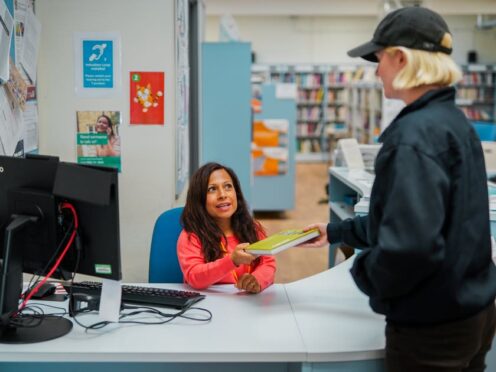
Disabled people need fairer representation in media, advertising and marketing content, campaigners have warned.
The Business Disability Forum asked more than 6,500 British adults, including more than 2,300 who identified as disabled, about the representation of disability in content they had recently seen, watched or read.
The poll, conducted by Ipsos and released on Tuesday, suggested that many disabled people do not feel represented by images used in media, advertising and on TV.
A third of respondents (32%) said they had not seen disability represented in content they had seen, watched or read during the last six months at all.
Respondents without a disability were significantly less likely to see disability represented in images than people with disabilities at 40%, compared to 17% of respondents with a disability, the research found.
It also suggested that uncertainty still exists, with 17% of respondents not knowing if they had seen disability represented in any images they had seen in the last six months.
Elsewhere, less than a quarter of people with a disability (23%) agreed that images of disabled people used in content reflected their own experience.

Images of wheelchair and mobility scooter users are the most likely to have been seen in content representing disability – by 26% of respondents.
This comes despite Disability Sport’s findings that less than one in 10 disabled people use wheelchairs in real life and disability covers a broad range of conditions, many of which are less visible.
The research has been published as the Business Disability Forum launches its “Changing the image of disability” campaign, supported by Paralympic gold medallist Kadeena Cox MBE, model Kelly Knox, and inclusion advocate Sinead Burke.
The organisation is calling on businesses and the media to increase representation as well as create a more authentic view of disabled people in their content.
Alongside the poll, it published free guidance on portraying disability and a collection of 50 disability-smart images for the media, created with disabled people as models and advisers.
A bank of 480 free images have also been created for the forum’s business members, it said.
In its research, the Business Disability Forum cited the Equality Act definition of disability as a condition or impairment that has a substantial and long-term adverse effect on the individual’s ability to carry out normal day-to-day activities.
Ms Cox, who had a stroke in 2016 and was later diagnosed with Multiple Sclerosis, said: “Just because my disability is less visible, it doesn’t mean that it has less of an impact on my life.
“We need to change how disability is viewed and that’s why I am supporting Business Disability Forum’s ‘Changing the image of disability’ campaign.
“I hope it will encourage more people to look beyond the obvious and the stereotypes and to see that disability is something that can affect anyone.”

Ms Burke, chief executive of accessibility consultancy Tilting the Lens, said: “For too long, images of disabled people have been clinical, and without reflection of community or disability pride.
“Stock imagery can reiterate exclusionary narratives, making disabled people objects rather than subjects or protagonists.
“Visibility alone cannot be a metric for systemic change, but this campaign and its library of images for businesses and media is a key milestone.”
Lara Davis, Business Disability Forum’s head of communications, said: “Our view of the world is influenced by the images we see in media and advertising.
“Too often disabled people are either missing from that content or are represented in an unrealistic way, reinforcing unhelpful stereotypes and leaving disabled people feeling overlooked and misunderstood.”
Steven Morris, campaigns officer at the national disability charity Sense, who is deafblind, said: “Disabled people deserve to have our experiences reflected in the media in an authentic way.
“We also know this representation can have a big impact on public attitudes to disability.
“We would love to see people with a range of more complex disabilities, like deafblindness, better represented in the media and advertising.”

Enjoy the convenience of having The Sunday Post delivered as a digital ePaper straight to your smartphone, tablet or computer.
Subscribe for only £5.49 a month and enjoy all the benefits of the printed paper as a digital replica.
Subscribe